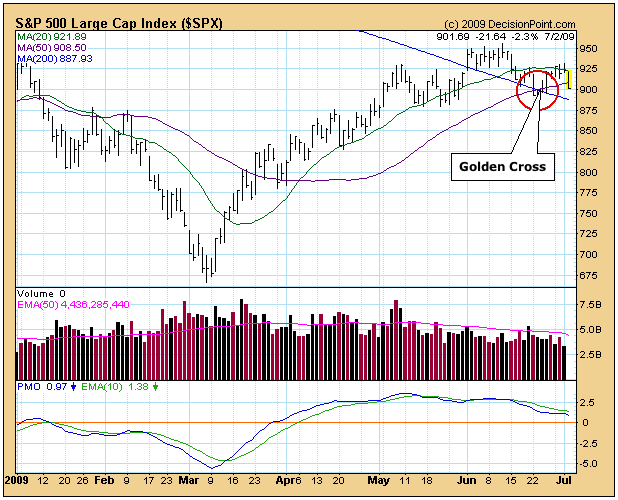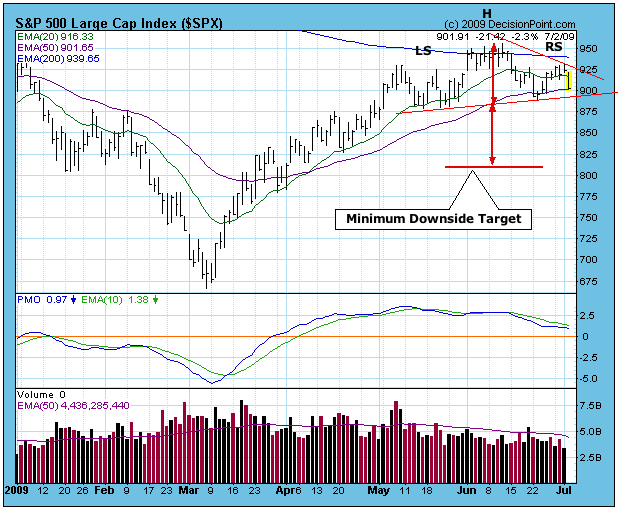About a week ago the S&P 500 50-SMA (simple moving average) crossed up through the 200-SMA. (See chart below.) This is known as a "Golden Cross" because it is interpreted by many as a sign that the market is turning long-term bullish. Of course, this generated enormous optimism among the market cheerleader crowd, most of whom do not use technical analysis unless it supports their position. On the other hand, a highly regarded economist/market analyst blew his stack that anyone could be so lame-brained to use such a simple event to imply that the market was about to go ballistic. Since both sides of this argument regarding a technical event are offered by people who are fundamental analysts, I thought it would be useful to present a technician's point of view.
First of all, a 50/200-SMA crossover means nothing to this technician because I use exponential moving averages, and a golden cross has not yet occurred on the 50/200-EMAs. (See my article of June 19.) Second, if we were to get a 50/200-EMA golden cross, it would be an important event, but it would not be a sign to pile back into the market with both feet.
A golden cross applies only to the price index where it occurs. With the S&P 500 it means, based upon price movement, the broad market is turning positive, and, in technical terms, we will have entered a long-term bull market. At that point we would shift our emphasis away from shorts and toward longs. We would start assessing indicators and setups based on the assumption that we were in a bull market.
Sure, false signals are generated, but we can only act on what we know. In this case we would begin to look for medium- and short-term setups for long positions. If the LT buy signal fails, chances are that good setups will not be very common, and good position management will limit losses. A golden cross is not useless, nor is it a signal to throw caution to the wind. It is really an information signal, not an action signal.
The next chart shows the current market conditions using EMAs. Note that we are still awaiting the golden cross. More immediate to our attention is the fact that a fully developed head and shoulders pattern has formed, and Thursday's decline appears to be setting up challenge to the neckline. If the pattern executes (the price index violates the neckline), the minimum downside target is about 810.
If the pattern fails to execute and prices rally off the neckline, it will tell us that medium-term bullish forces are still in effect.
Bottom Line: The golden cross is a positive sign and gives us information about the market's condition and trend. If it occurs, don't overreact or ignore it. There is currently a head and shoulders pattern that is on the verge of violating its neckline. If that happens, it would be a pretty good sign that the rally is over.








